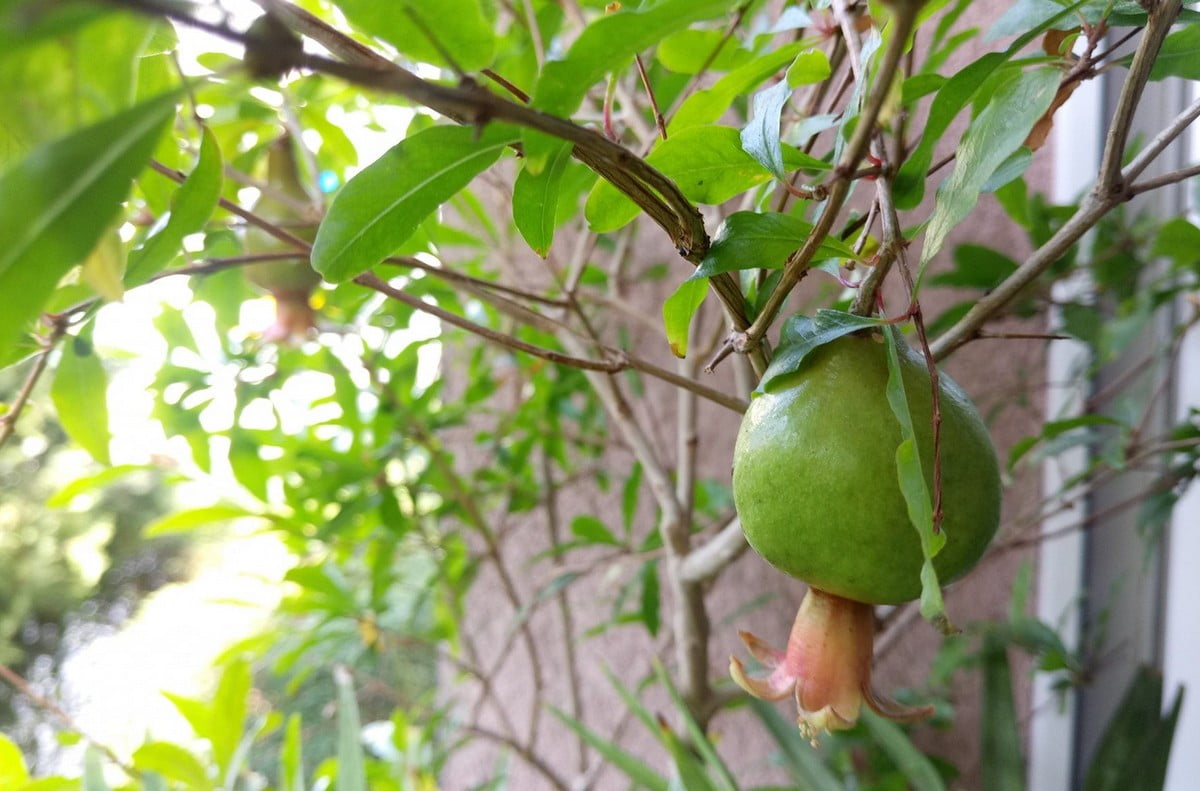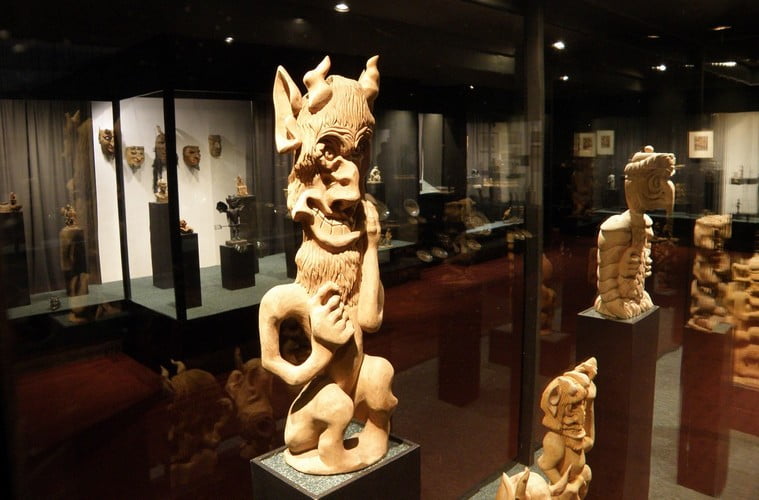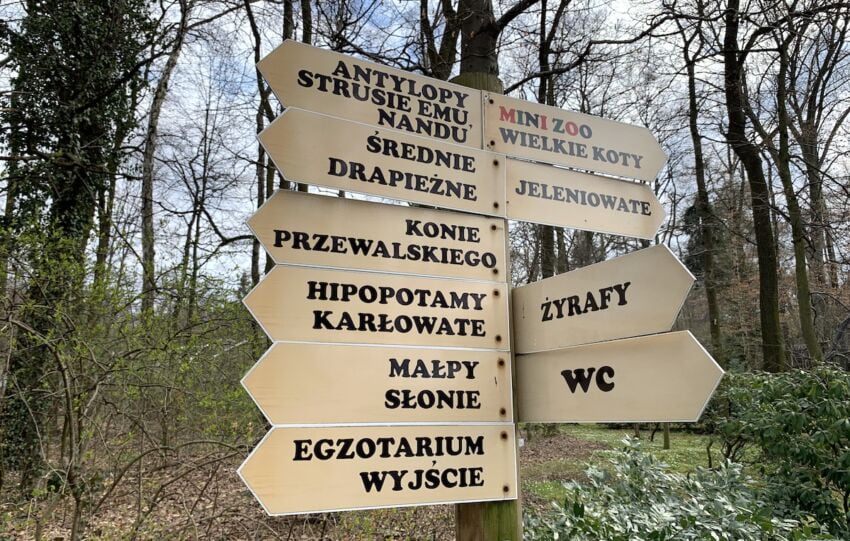Share This Article
On the western coast of Cyprus, just a few minutes from the center of Paphos, lies a place filled with silence, history, and mystery. The Tombs of the Kings – an inspiring site of underground chambers carved directly into the rock have amazed and inspired for centuries.
Although no actual kings were buried here, the name is not without reason. The monumental architecture and seaside location leave a truly regal impression. If you’re looking for something more than beaches and tavernas during your trip to Cyprus, this is the place where you’ll feel the breath of antiquity.
Ready for a journey back in time?
How to Get There?
The Tombs of the Kings are located in the northwestern part of Paphos, right along the coastal Tombs of the Kings Avenue. It’s one of the city’s most iconic archaeological attractions, just a few kilometers from the port and picturesque seafront with a lighthouse.
Getting there is easy, it’s well connected with the rest of the city. From the center of Paphos, you can walk there in under 30 minutes, or get there even faster by public transport. A large, free parking area is available nearby, which is especially convenient for tourists traveling by rental car – a very popular way to explore Cyprus.
The area is clearly signposted, with many information boards leading to the entrance. In summer, it’s best to visit in the morning, as it gets crowded and very hot around midday. Late afternoon visits are also a great option – you can finish your tour watching the sunset over the Mediterranean.
The main entrance and ticket booth are located at 63 Tombs of the Kings Ave, Chlorakas 8015, Cyprus. There are also a few exit-only gates (no entry allowed), including ones near the Elysium Hotel and by the sea.
Tombs of the Kings – Tickets and Opening Hours
Entry to the Tombs of the Kings is ticketed, but the prices are surprisingly low – a standard ticket costs just €2.50, while children and teenagers under 18 can enter for free. There’s also a combined ticket option that includes other archaeological sites in Paphos, which is ideal for those planning to visit the nearby archaeological park at the port. Groups of over 10 people are eligible for a 20% discount.
The site is open daily from Monday to Sunday. In the summer season (April to October), opening hours are from 8:30 AM to 7:30 PM. In the winter season (November to March), hours are shorter – from 8:30 AM to 5:00 PM. For the most up-to-date information, it’s a good idea to check the official website.
The last entry is allowed 30 minutes before closing time, so plan your visit accordingly. The entrance is well-organized—no long queues or delays. There’s no need for advance reservations, and tickets can be purchased on-site with cash or card. The area is quite large, so bring comfortable shoes and water—especially in the hotter months.
The History of the Site
Despite its name, the Tombs of the Kings were not the final resting place of Cypriot monarchs. The name refers instead to the grand, majestic nature of the tombs, their architecture, and elaborate details. This necropolis was used to bury aristocrats and high-ranking officials of the Hellenistic and Roman administrations who lived in Paphos between the 4th century BCE and the 3rd century CE.
Most of the tombs uncovered here date from the Roman period, when Paphos was a major administrative center on the island. They were carved directly into solid limestone and reflect a stark architectural style. Many feature columns—evidence of Egyptian influence, which isn’t surprising given Cyprus’s strong trade ties with Egypt. Although many of the tombs were looted in ancient times, some still retain fresco fragments or sculptural details. Today, the site is protected by the Department of Antiquities of Cyprus and is part of the UNESCO World Heritage List.
The first excavations were carried out between 1937 and 1951, but systematic archaeological work began only in 1977.
The Tombs of the Kings and UNESCO
Since 1980, the Tombs of the Kings have been listed as a UNESCO World Heritage Site, along with other archaeological treasures in Paphos, such as Roman mosaics, villa ruins, and early Christian basilicas. This recognition not only confirms the site’s historical significance but also ensures its protection for future generations.
The UNESCO status highlights the uniqueness of the tombs’ architecture, a rare blend of Hellenistic, Roman, and Egyptian influences. Their monumental rock-cut structures have survived thousands of years in remarkably good condition. UNESCO designation also attracts international researchers and archaeologists, while for tourists, it guarantees a visit to a site of global importance. Walking among the tombs, you can truly feel the exceptional character of the place. The Tombs of the Kings are a clear testament to the deep historical roots of Cyprus.
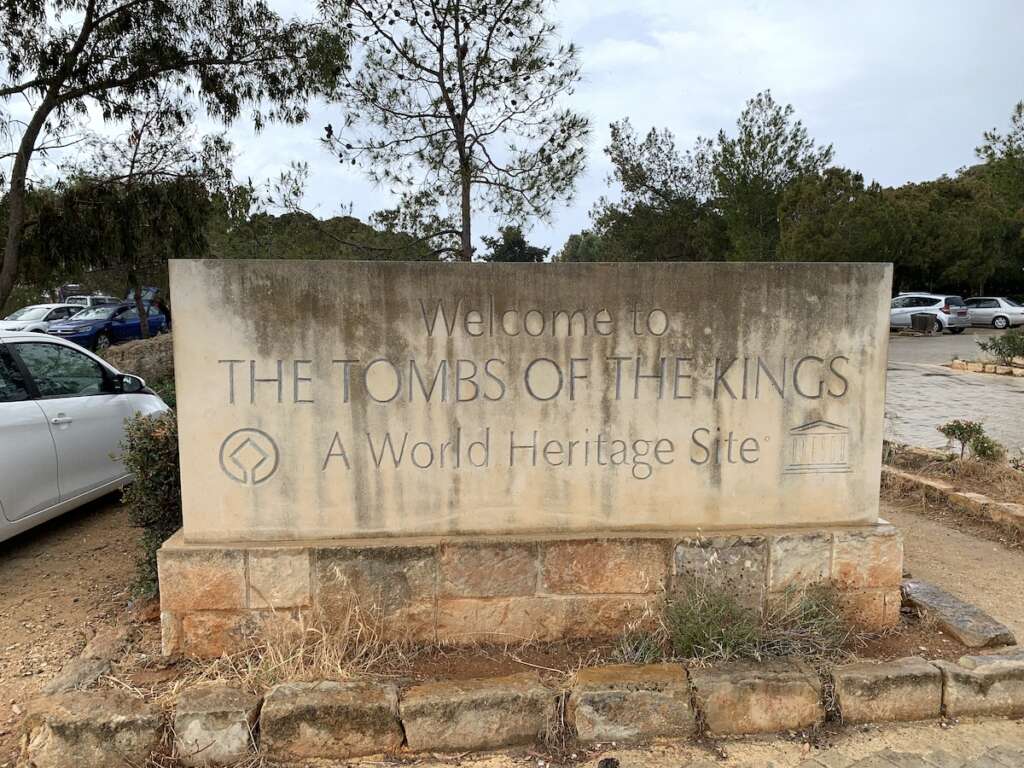
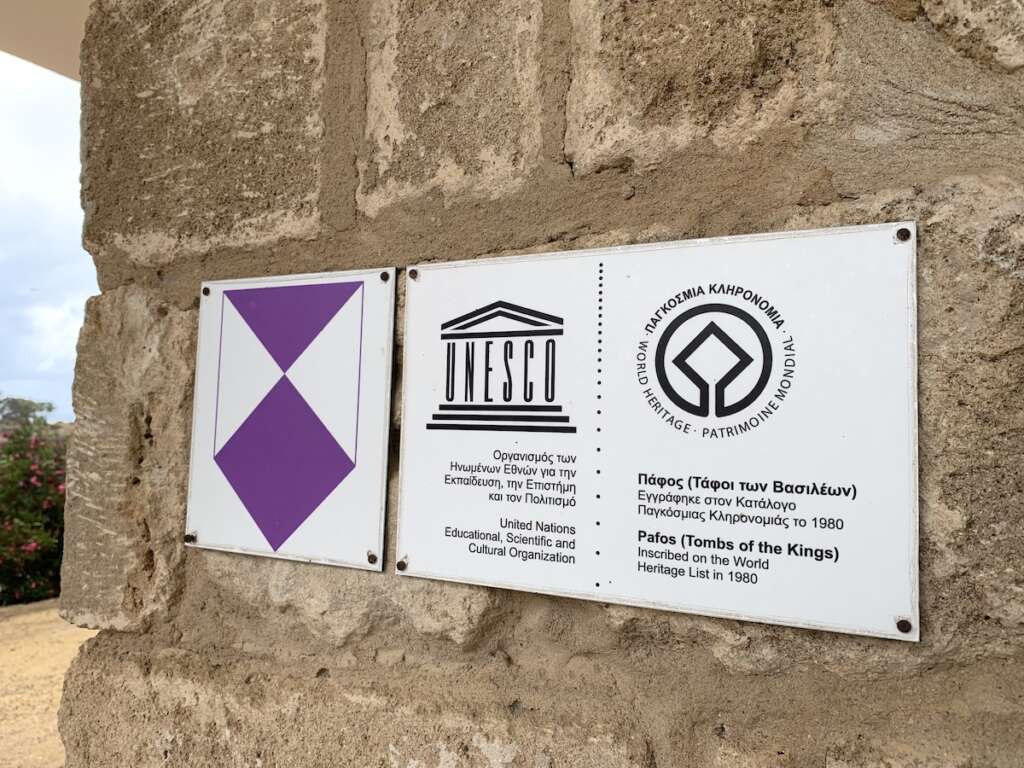
What to expect when You visit?
Visiting the Tombs of the Kings feels like stepping into the shoes of a centuries-old explorer. The archaeological site is extensive, allowing visitors to move freely between tombs. Most are open for entry, and their mysterious interiors leave a lasting impression.
The most impressive are those with columned atriums—they resemble underground residences more than burial places. Pay attention to the interplay of light and shadow in these spaces—even in full sunlight, the interiors hold a captivating ambiance. Throughout the site, you’ll find informative signs in Greek and English, which help explain the historical and cultural context of the tombs.
As you walk along the carved rock paths, try to imagine ancient funeral rituals in such a unique and scenic location. The peaceful atmosphere and lack of large crowds make it an ideal spot for history lovers and travelers seeking quieter experiences. Touring the site usually takes about 1 to 1.5 hours, depending on your pace and interests.
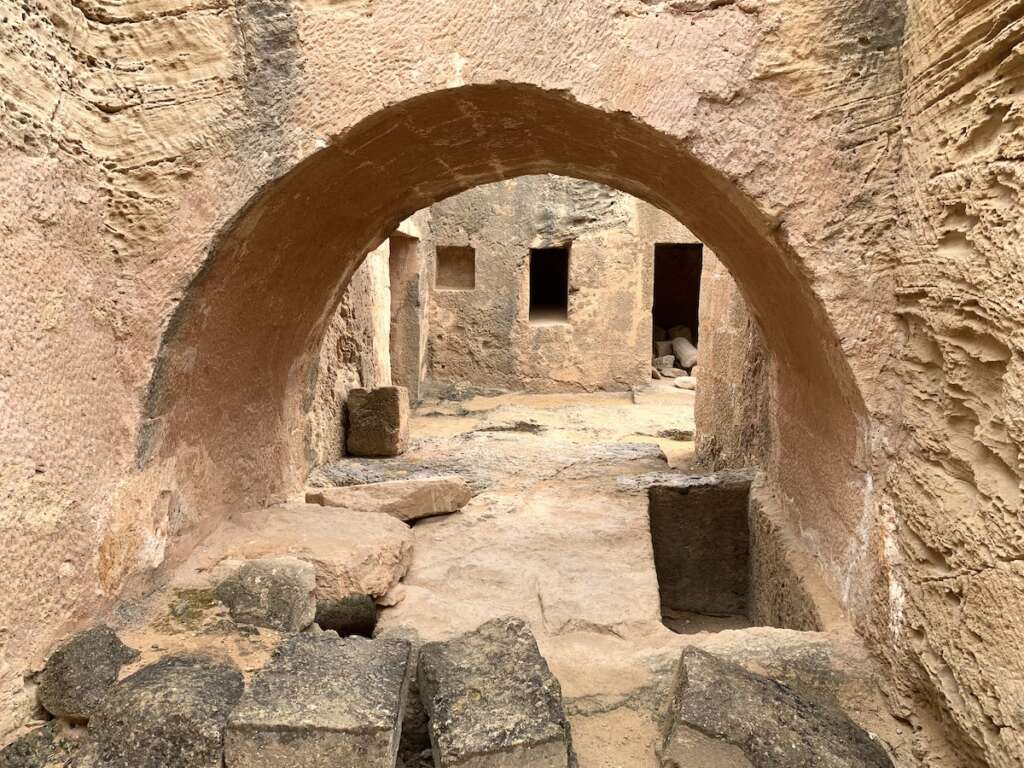
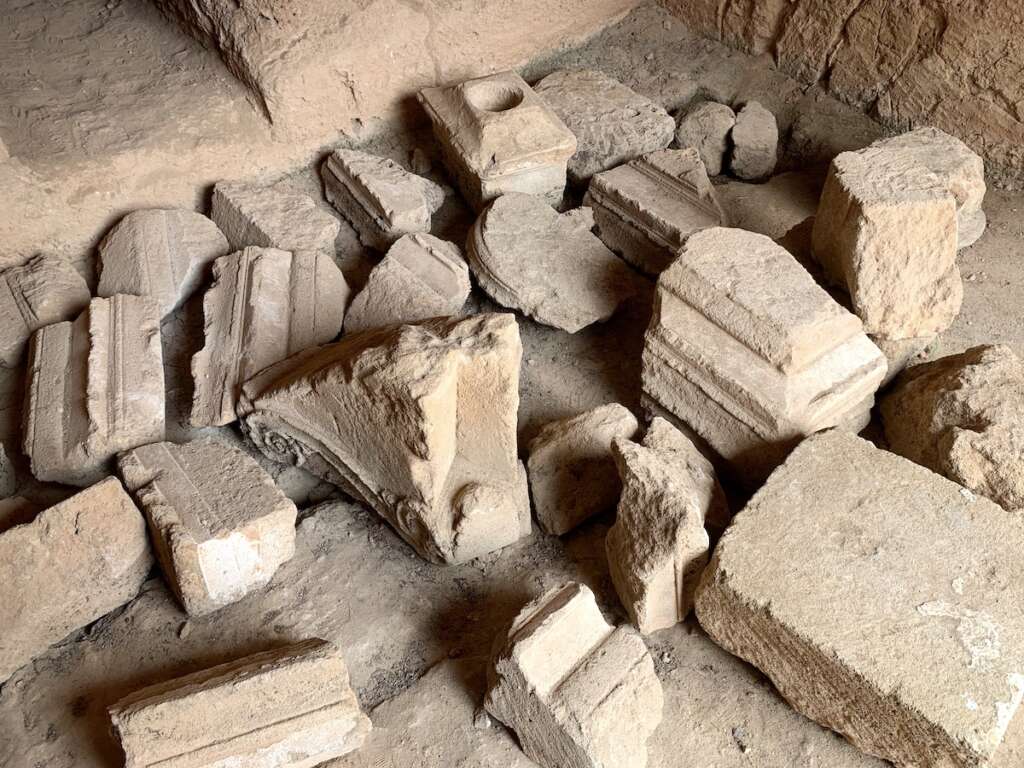
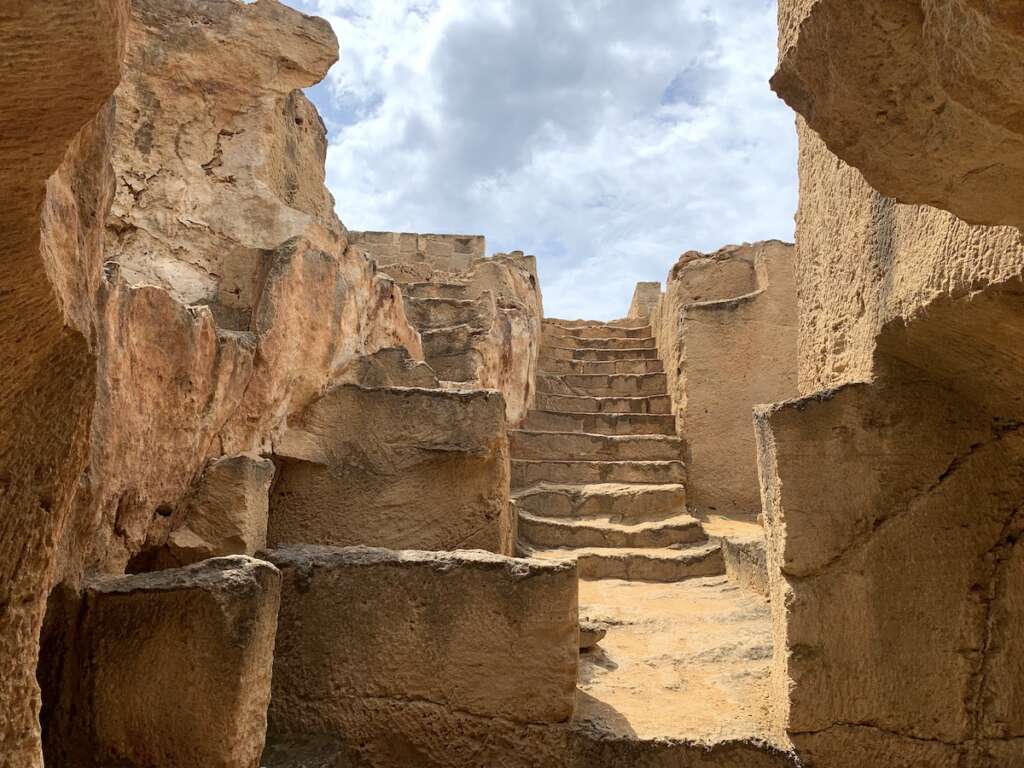
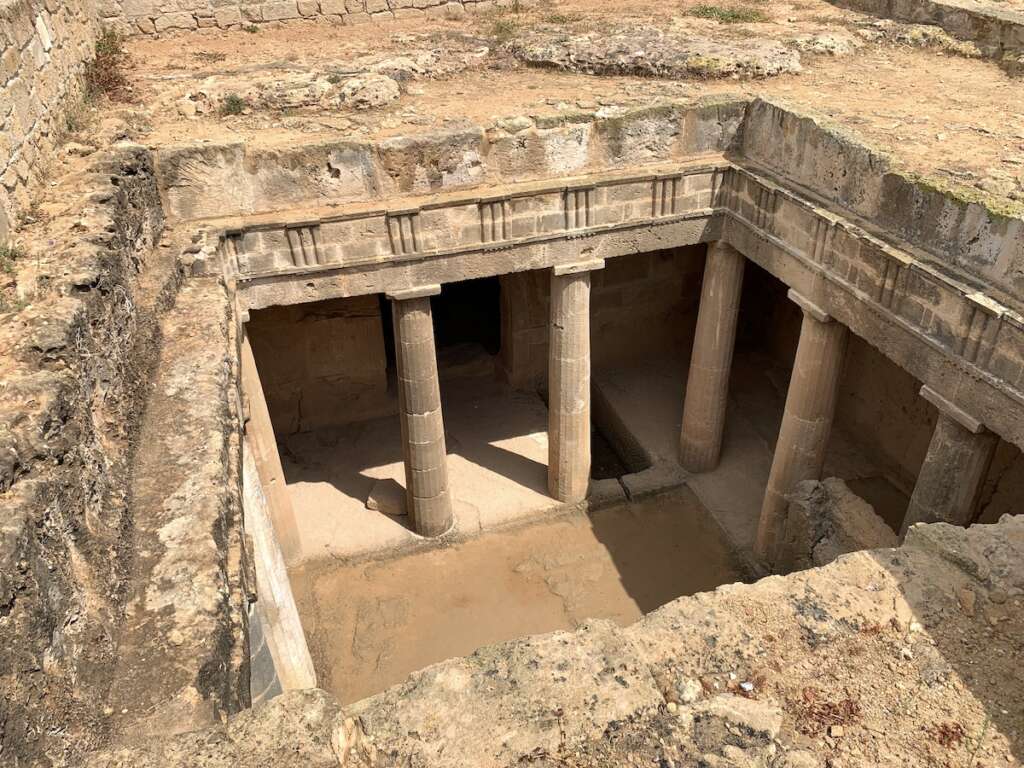
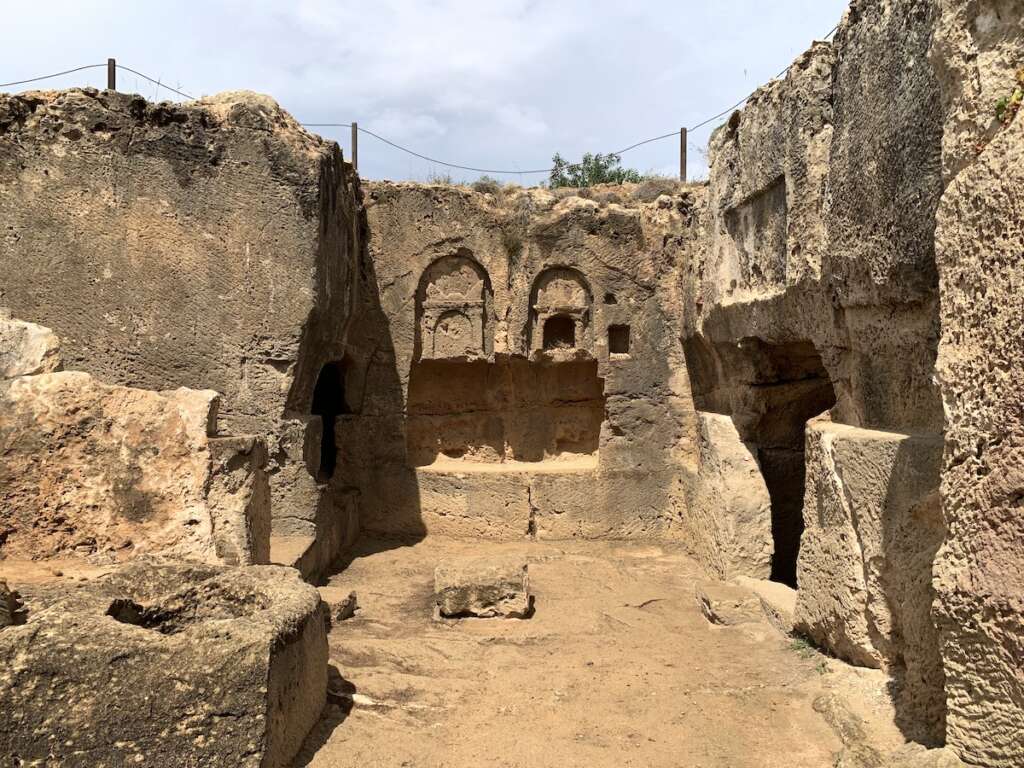
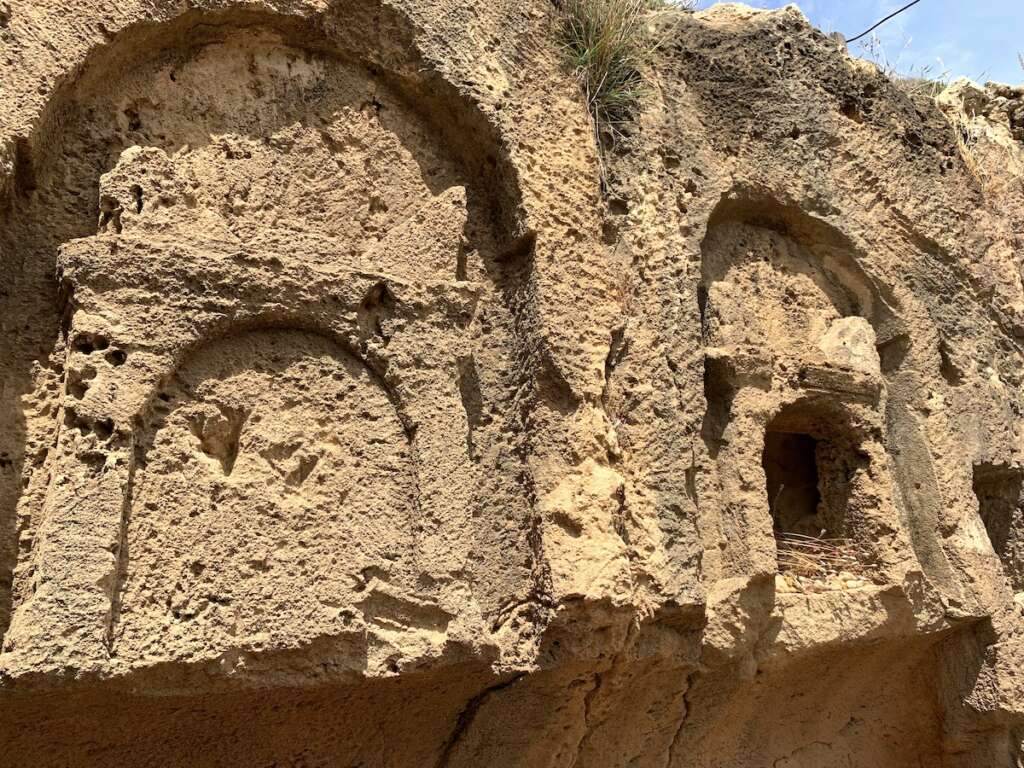
Impressions and Reflections
Exploring the Tombs of the Kings is a memorable experience – largely due to the site’s distinctive atmosphere. While it doesn’t offer elaborate tourist infrastructure, its authenticity and tranquility are what make it special. Unlike some of the busier landmarks in central Paphos, here you can truly take your time and absorb the history without being rushed or surrounded by crowds. Later the same day, I visited other archaeological sites with more tourists, though the weather may have been partly to blame for the smaller numbers.
Many visitors agree that the Tombs of the Kings is one of the most surprising places in all of Cyprus – unassuming from the outside, it reveals its uniqueness as soon as you step inside. The location itself is also a highlight – the necropolis sits right beside the Mediterranean Sea. For photographers, the site offers endless inspiration – the play of light, stone textures, symmetry, and natural surroundings provide fantastic creative opportunities. Just remember to bring a hat and sunscreen, as there’s very little shade. If you appreciate history, beauty, and calm, the Tombs of the Kings will not disappoint.

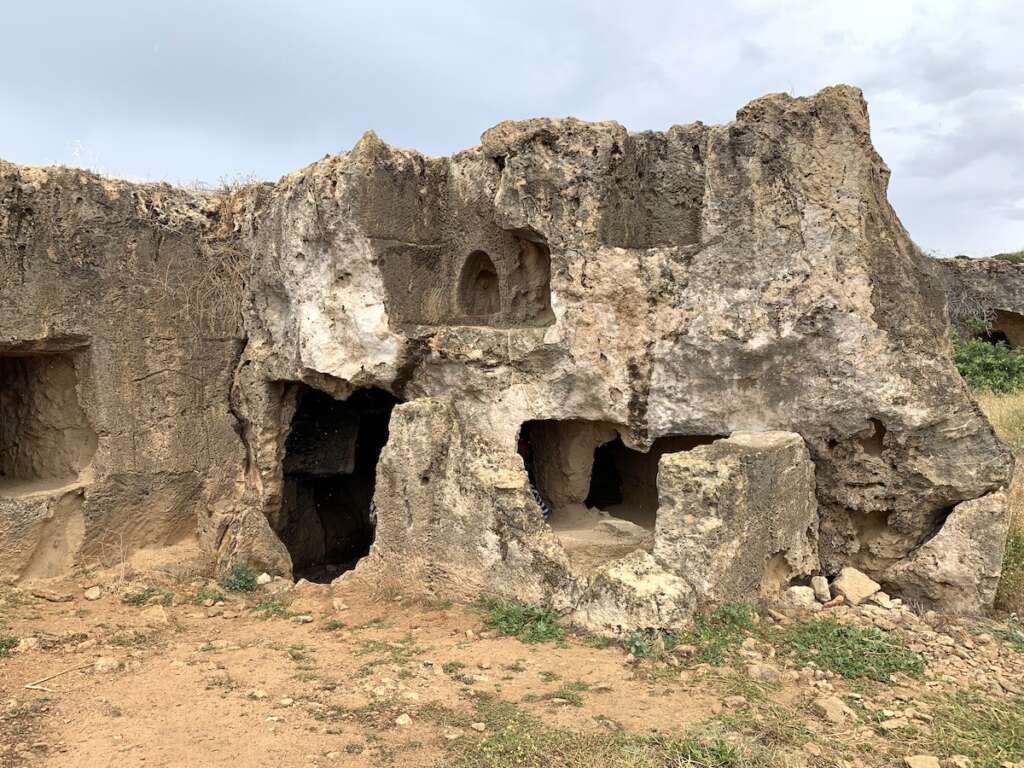
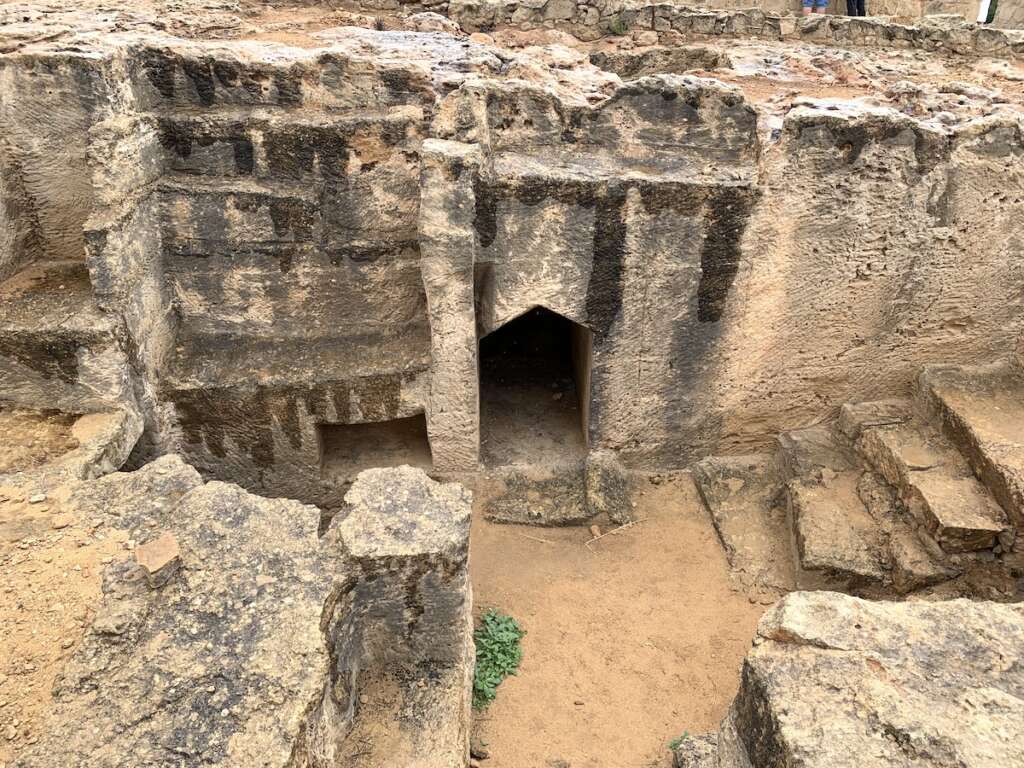
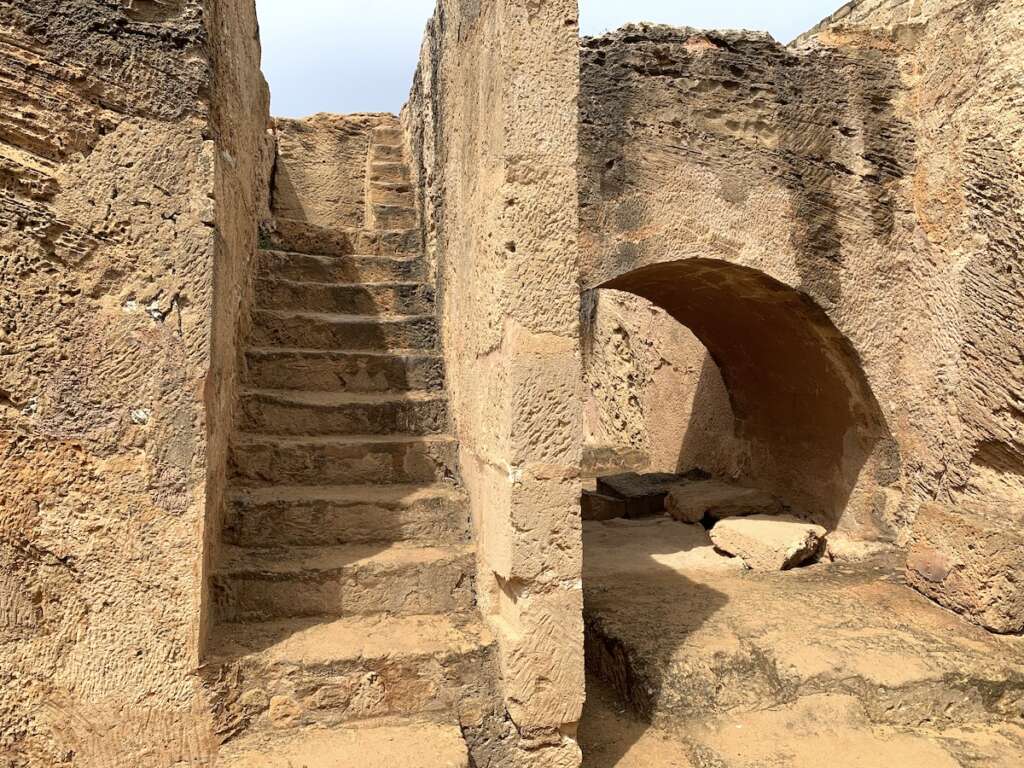
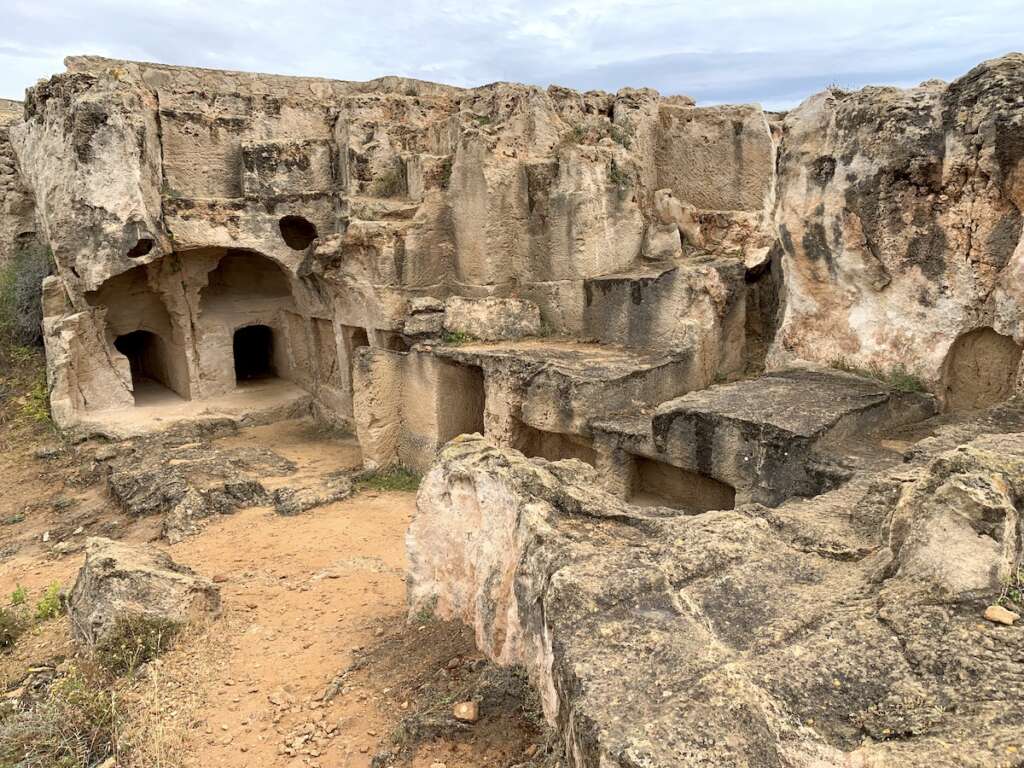
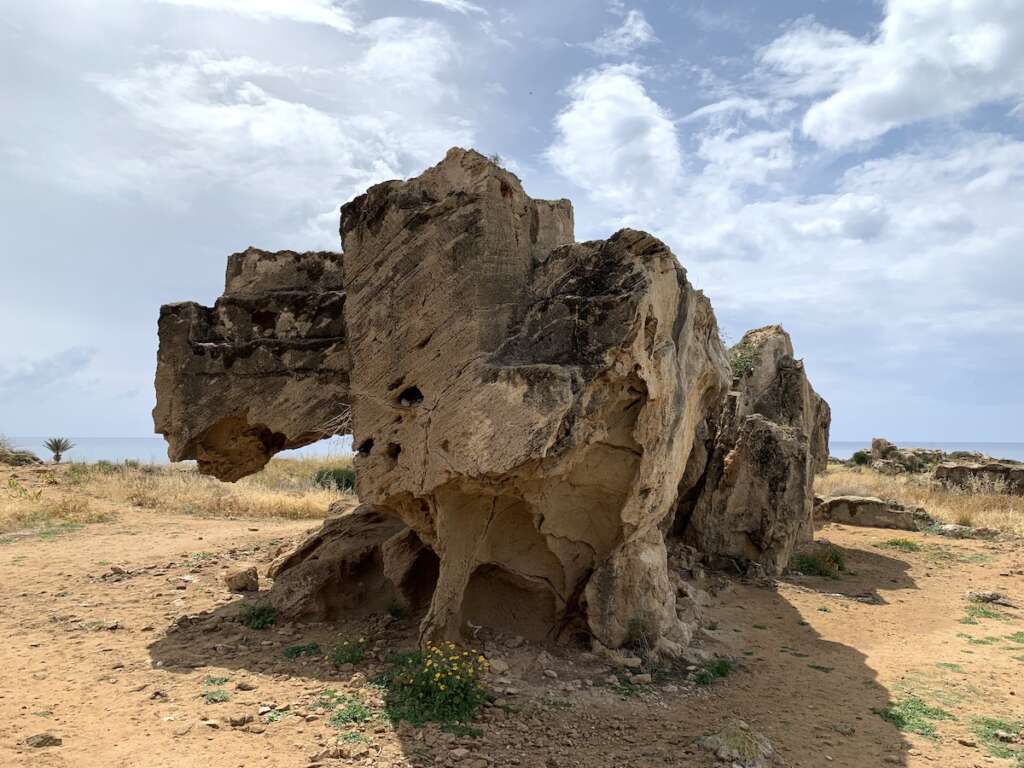
What’s nearby?
Paphos is a city steeped in history and culture, so there’s plenty more to see near the Tombs of the Kings. Most notably, the famous Archaeological Park near the port features Roman mosaics, villa ruins, and a fortress. Walking along the seafront promenade from the tombs to the port takes about 30–40 minutes and offers beautiful coastal views.
Also nearby is the Paphos Castle – a former fortress guarding the port entrance, which is open to visitors. Nature lovers can head north toward the Akamas Peninsula, where they’ll find scenic hiking trails, blue lagoons, and secluded beaches. Don’t miss the nearby Agios Neophytos Monastery or the banana and citrus plantations on the city’s outskirts. For those planning a longer stay, Paphos makes a great base for exploring western Cyprus. Just an hour’s drive away are the Troodos Mountains and traditional stone-built villages. The Tombs of the Kings could be not only your destination – but the perfect starting point for an unforgettable journey across the island of Aphrodite.



